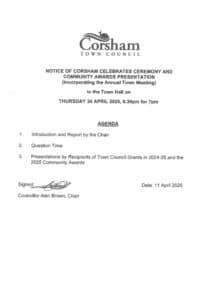Corsham Court
Corsham Court has belonged to the Methuen family for eight generations. James Methuen-Campbell has been the Lord of the manor, and heir to the title, currently held by Lord Robert Methuen, since 1994. The family can be traced back to the mid sixteenth century.
The house is Elizabethan, dating from 1582, and contains a famous collection of paintings and eighteenth century furniture. The picture gallery, the largest room, was constructed by Capability Brown, in the 1760’s, to display the collection of Sir Paul Methuen, in white marble, which was made using his death mask.
The park was laid out by Capability Brown and Humphrey Repton. There is a lake on one side of the house, and belts of trees mark the park perimeter. A carriage drive laid out by Repton leads from the graveyard of St Bartholomew’s Church through the park to the woods. The park is accessible from the gates in Church Square, and two public footpaths run through it.
There are two distinct gardens, The Old Rose Garden, and the Lily Pond garden. The oldest trees include an oriental plane, a black walnut of approximately 150 years old, and a sequoia. The gardens also contain a collection of magnolias made by the 4th Lord Methuen, which, with a mixed bulb collection, flower every spring.
The state rooms of the house and the gardens are open to the public from 20th March to 30th September, daily except Mondays and Fridays, from 2pm to 5.30pm, and from 1st October to 19th March, weekends only, from 2pm to 4.30pm.
Further Information
Is available on the Corsham Court website, or by email.
Telephone: 01249 701610
Corsham Court, Corsham, Wiltshire SN13 0BZ
Almshouses
The Corsham Almshouses, Free School and Master’s House were founded and endowed in 1668 by Lady Margaret Hungerford, to accommodate six poor people, and to educate ten poor scholars.
Virtually unchanged in 350 years, the buildings retain most of their original features and represent a fine example of 17th Century social provision.
The almshouses, still in private occupation, are connected at the rear by a charming covered Pentice or Cloister walk giving covered access to the outbuildings (communal privy), the water well, and 6 small walled yards for storing fuel.
The schoolroom still has its original pulpit, box pews, master’s chair and pupils’ benches and conjures up graphic visions of life in those times.
The Hungerford Almshouses, Pound Pill, Corsham, Wiltshire SN15 9HT
The School Room and Master’s House. Open Tue-Sat 11am-4pm.
Arnold House
The Corsham Almshouses, Free School and Master’s House were founded and endowed in 1668 by Lady Margaret Hungerford, to accommodate six poor people, and to educate ten poor scholars.
Virtually unchanged in 350 years, the buildings retain most of their original features and represent a fine example of 17th Century social provision.
The almshouses, still in private occupation, are connected at the rear by a charming covered Pentice or Cloister walk giving covered access to the outbuildings (communal privy), the water well, and 6 small walled yards for storing fuel.
The schoolroom still has its original pulpit, box pews, master’s chair and pupils’ benches and conjures up graphic visions of life in those times.
The Hungerford Almshouses, Pound Pill, Corsham, Wiltshire SN15 9HT
The School Room and Master’s House. Open Tue-Sat 11am-4pm.
Mayo Memorial
Charles Mayo lived in Ivy House at the corner of Priory Street and The High Street from 1868 to his death in 1895.
Perhaps his greatest achievement was to chair the Water Company that brought a piped water supply to Corsham in 1889. He was a most respected Victorian gentleman dividing his time between philanthropic work and local politics.
The monument was erected outside of his home a few years after his death and has recently been renovated by the Civic Society with grants provided by the Heritage Lottery fund and Corsham Town Council
Flemish Weaver's Cottages
Situated at the Northern end of Corsham High Street, this fine row of 17th Century houses are known as ‘Flemish Cottages.’ They are Grade II listed.
During the 17th Century Flemish weavers who were fleeing religious persecution in their homeland were attracted to the area where there was a settled group who had been in the country for several hundred years.
The cottages were built by Paul Methuen (then Lord of the Manor) to house the weavers to encourage them to stay in the area. They are built of local rubble stone under stone tiled roofs.
There are also some cottages used by the weavers around the corner in Church Street. You can see the doors on the second floor where the fleeces would have been taken in from the horse carts and then the finished products would have left from the ground floor.
The wool trade in the area continued until the 19th Century.
St Bartholomew’s Church
St Bartholomew’s Church – widely known as St Bart’s in the town – is a Grade 1 Listed building, with a rich heritage dating from Saxon times.
The original Saxon church was established well before the Normans invaded England in 1066AD. It is recorded that William the Conqueror granted the Church at Corsham to the Abbey of St Stephen at Caen in Normandy.
The present church building dates from the middle of the 12th century, but there have been many changes and additions since then, ending with a major restoration in Victorian times that saw the tower and spire added, to replace the old central tower, in 1874.
St Bartholomew’s Church, Church Square, Corsham, Wiltshire SN13 0BS
Listed Buildings
There are a great number of historic, listed buildings in Corsham and its surrounding villages. To find out more, please visit the British Listed Buildings website.




